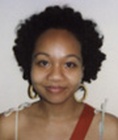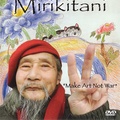My mother is Japanese American, and my father is African American.
According to this equation, most would assert that this fact makes me exactly one-half Asian and one-half Black, right? I whole-heartedly disagree. When faced with an either/or dilemma, I will defiantly choose the both/and option. The sum of my parts, racially speaking, is greater than one. Let me explain:
I am of the school of thought that takes the math-defying stance that mixed people are not split schizophrenically down the middle when it comes to their ethnic identities. This means that despite my ambiguous phenotypic appearance, I consider myself just as Japanese American as anyone who was born to two Japanese American parents. The same applies to my African American side. The fact that my parents are of two different races is incidental to the big picture – my blended cultural heritage cannot be quantified in percentages. If one should insist on doing so, the most accurate description would be to say that I am 100% Japanese and 100% African American, much like a participant in kip fulbeck: part asian, 100% hapa exhibition suggested.
Please do not misinterpret my views on double identity; I do not believe that mixed race individuals are somehow superior to monoracials, I am not a cultural expert on everything Japanese and African American, and I am definitely not any kind of hapa superwoman. I do not subscribe to “hybrid vigor” theories (e.g. multiracial people are better looking, multiracial people are smarter, et cetera). The sentiments expressed above simply mean that culturally, I am no less Japanese and no less African American than others who were born to two parents of the same race, and I should not be considered as such. The connotations attached to such commonly-used terms as “half-Japanese” or “part-Asian” can be damaging, as they discredit my experience by suggesting that I am somehow less cultured than someone of homogeneous heritage. I share the same culture and the same history as someone born to two parents of the same race. I am not half, I am fully both.
Phenotype only tells one small part of the story of my identity, but it plays a major role in how the outside world identifies me. Physical appearance is often the first thing that calls ethnic identity into question, provoking the ubiquitous and inescapable “What are you?” Before asking this question, strangers, acquaintances, and even friends often make innocent yet misguided assumptions based on outer appearance alone. I am most often perceived as both non-Japanese and non-Black, as most people seem to think I am Filipina. I have also been mistaken for Hawai`ian, Samoan, Black and White, Japanese and White, Chinese, Mexican, Puerto Rican, Dominican, and Cambodian. It can be amusing to learn how others interpret your appearance, but when your true ethnicity is rarely recognized, these perceptions can also grow tiresome and frustrating.
As a child, I felt left out whenever I would go to an Asian restaurant with my family, when I would be the only one given a fork (everyone else would receive chopsticks). A few years ago, I took a taiko drum class with a Korean American friend. During the lesson, the Nisei instructor, obviously assuming I was not Japanese and maybe not even Asian, took much time and effort explaining the significance of taiko to me alone, although I had grown up in the presence of taiko all my life! In a more recent case, I actually overheard someone speaking about me, stating with certainty, “She’s not Asian.” (Imagine my surprise!) This individual did not realize that he was talking to my more Asian-looking hapa cousin, who immediately corrected him. (Imagine his surprise!) These anecdotes are funny in retrospect, but a lifetime of these experiences has led me to occasionally be a bit defensive about my identity.
In college, I made myself a shirt that read, “FULL HAPA” in bold, two-toned lettering. At one point, hapa was the only label I felt that I could fully align myself with, after years of not being Japanese enough or “Black” enough by others’ narrow-minded standards. I and many others have embraced the term hapa because there is no other term that describes our cultural identities and shared mixed race experiences with just one word. It’s like this: imagine growing up and being told repeatedly that you did not quite fit in here, there, or anywhere. One day, you find a community that accepts you for all that you are, and you learn that there is even a word to describe your belonging within that community. Finally having this descriptive term for self-identification after years of marginalization is empowering, and this is why many mixed race Asians have such a deep connection with the word. Hapa-ness provides us with instant acceptance and understanding, whereas belonging within a monoracial community can require much more explanation and effort, with questions of cultural authenticity constantly looming overhead.
Fortunately, I have finally come to a point in my life where I no longer need the approval of others to validate my ethnic identity. Negotiating between my ethnic communities is not as daunting as it once was because others’ perceptions no longer lead me to question my own identity. I know deep down that I am more than just “half,” and while it does not protect me from occasional rejection, this knowledge prevents me from feeling excluded from communities to which I rightfully belong. I openly share my thoughts regarding mixed/hapa identity in the hopes that others will come to fully understand double identity, eventually moving away from the outdated “check one box only” mentality and toward a much more holistic view.
© 2008 Simone Momoye Fujita





